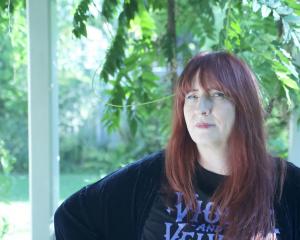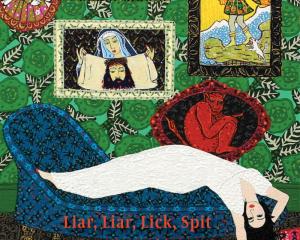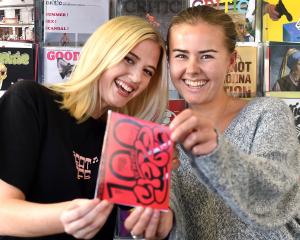The highly appealing
Great Galloping Galoot, by Stephanie Thatcher (Scholastic), contains a sweet and simple story for encouraging discussions about self-esteem and the importance of believing in oneself.
Great Galloping Galoot is a giraffe who is ridiculed by his community for being a clumsy fool, yet loved unconditionally by his parents. But because he is always called a great galloping galoot he has built up the strong belief that he is indeed "great".
Which is just as well because one day the jungle animals need someone who is clever and brave enough to help them when their bridge is swept away. The simple storyline of this book is beautifully paired with endearing pencil and watercolour illustrations. Suitable age: 2-6.
• Blue Gnu by Kyle Mewburn and Daron Parton (Scholastic) is a rhythmic tale about a gnu who wants to be the only one who's blue. Unfortunately, my group of 4-year-olds were quite indifferent to this story, most likely because of the repetitive nature of the language throughout the book, which makes this story boring for older children.
So the opportunity can be lost for sharing and discussing the important message about being different (whether through birth or choice). Quaint illustrations by Daron Parton.
• The delightful
Madison Moon and the hot-air balloon by Chris Gurney and Catherine Foreman (Scholastic) is full of silliness and fun, a book my test group adored. Madison Moon becomes tired of all the hustle and bustle of traffic as she drives around town. So to escape the madness she buys a hot-air balloon and begins travelling tranquilly in the sky.
Unfortunately her friends and acquaintances start buying their own hot-air balloons and before she knows it the sky becomes just as conjested as the roads.
This entertaining story contains fun, expressive language and provides lots of opportunities for children to make links to their own lives. Suitable age: 2-6 years.
• The
Three Little Pigs, a story and play by Roger Hall and Errol McLeary (Scholastic) is about as politically incorrect as one would expect. And while I truly support and actively encourage children's involvement in dramatic play, these three little pigs are called Tubby, Chubby and Bubby (which is repeated constantly throughout the story and play - Hall has obviously never had weight issues), so no decent parent or place of education would be able to use this book.
Because not only can some very young children read and understand meanings of written text but all children's self-esteem and sense of worth (of themselves and others) begins developing at a very young age, so why would an adult purposely subject them to this?
• Butterfly Butterfly, a pop-up book of colour by Petr Horacek (Walker Books), is a highly attractive, beautifully illustrated book. And even though this story is aimed at young children, my 4-year-olds were still mesmerised by the vibrant colours, the dynamic nature of the simple pictures, and the clever holes in the pages that link everything together. They even enjoyed the giant pop-up butterfly on the last page.
Children aged 1-4 years will adore this.
Paula Benson-Gamble is an early childhood teacher.

















